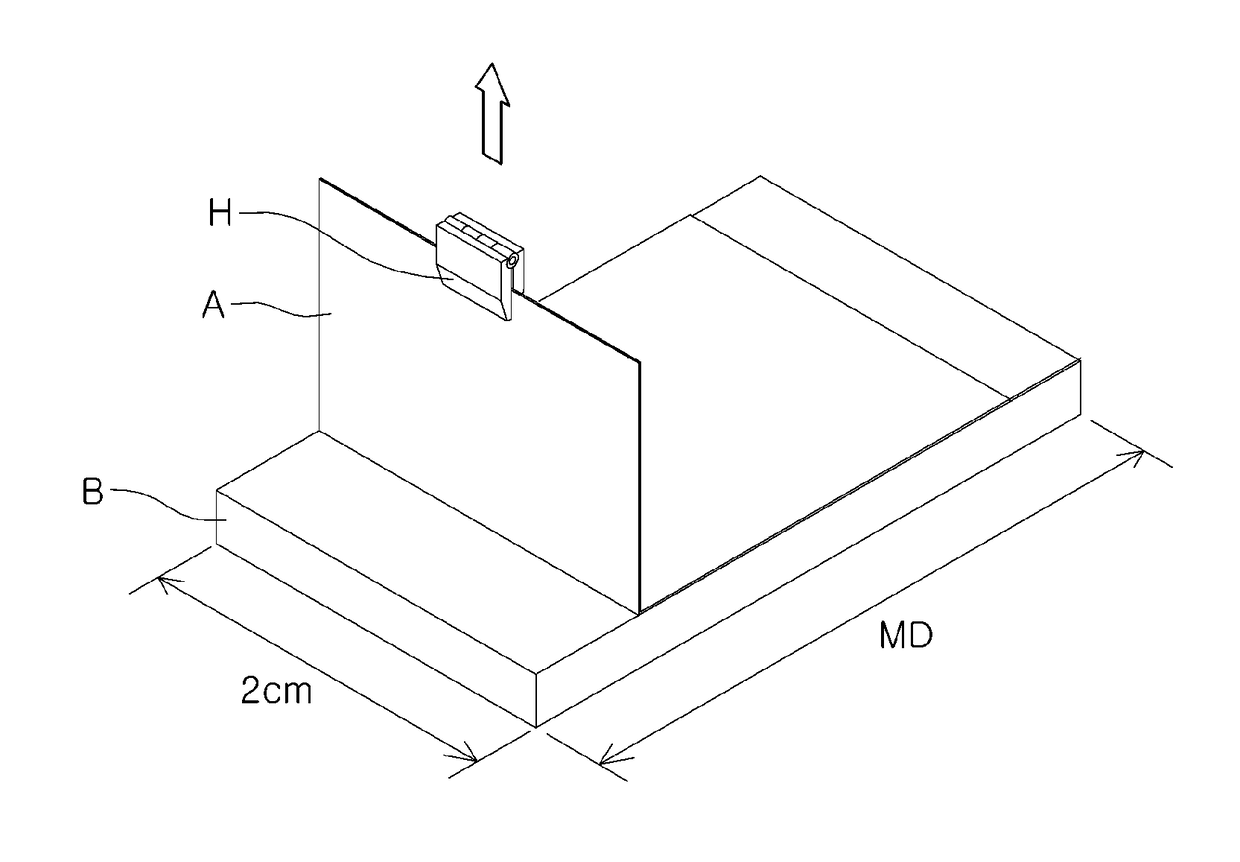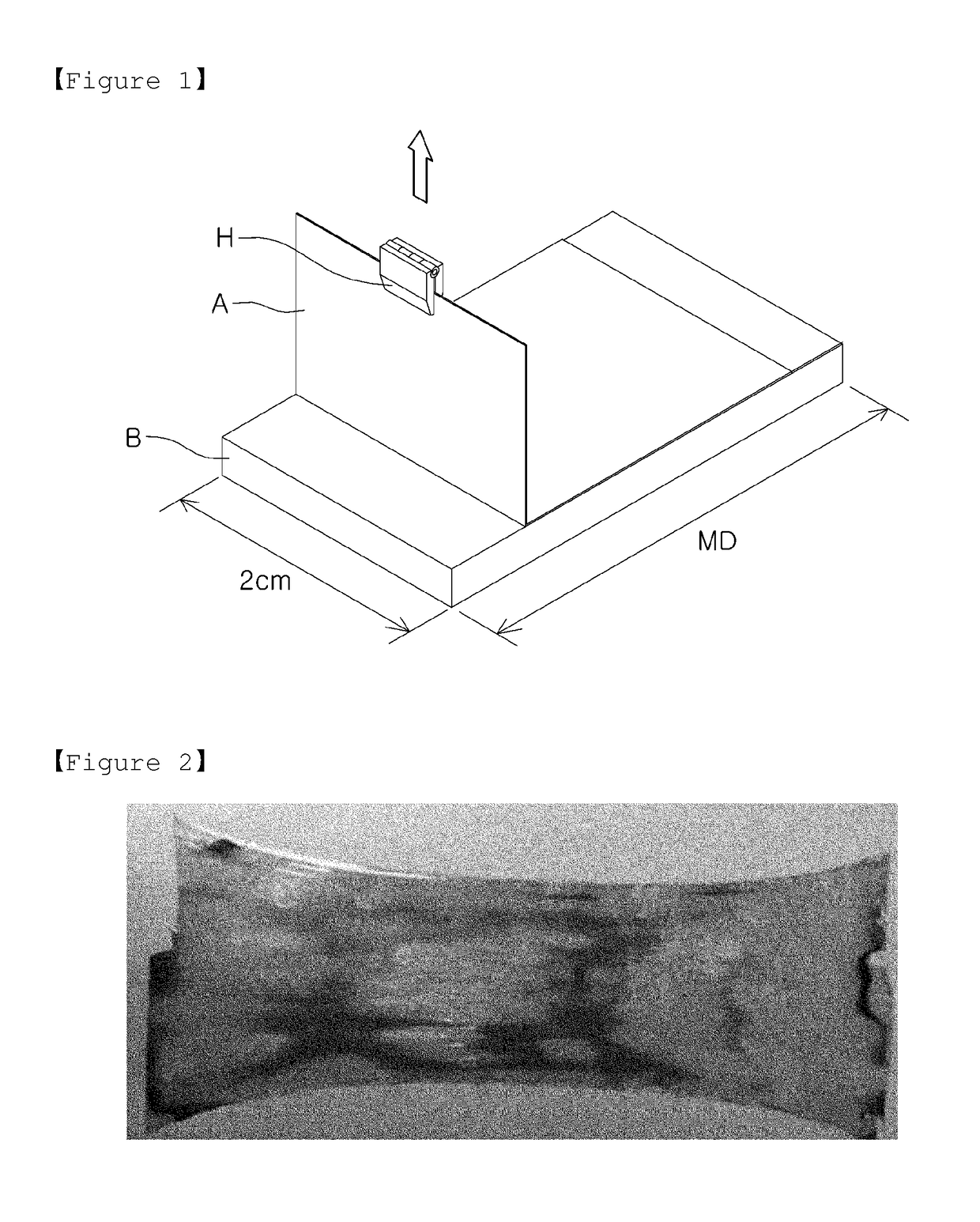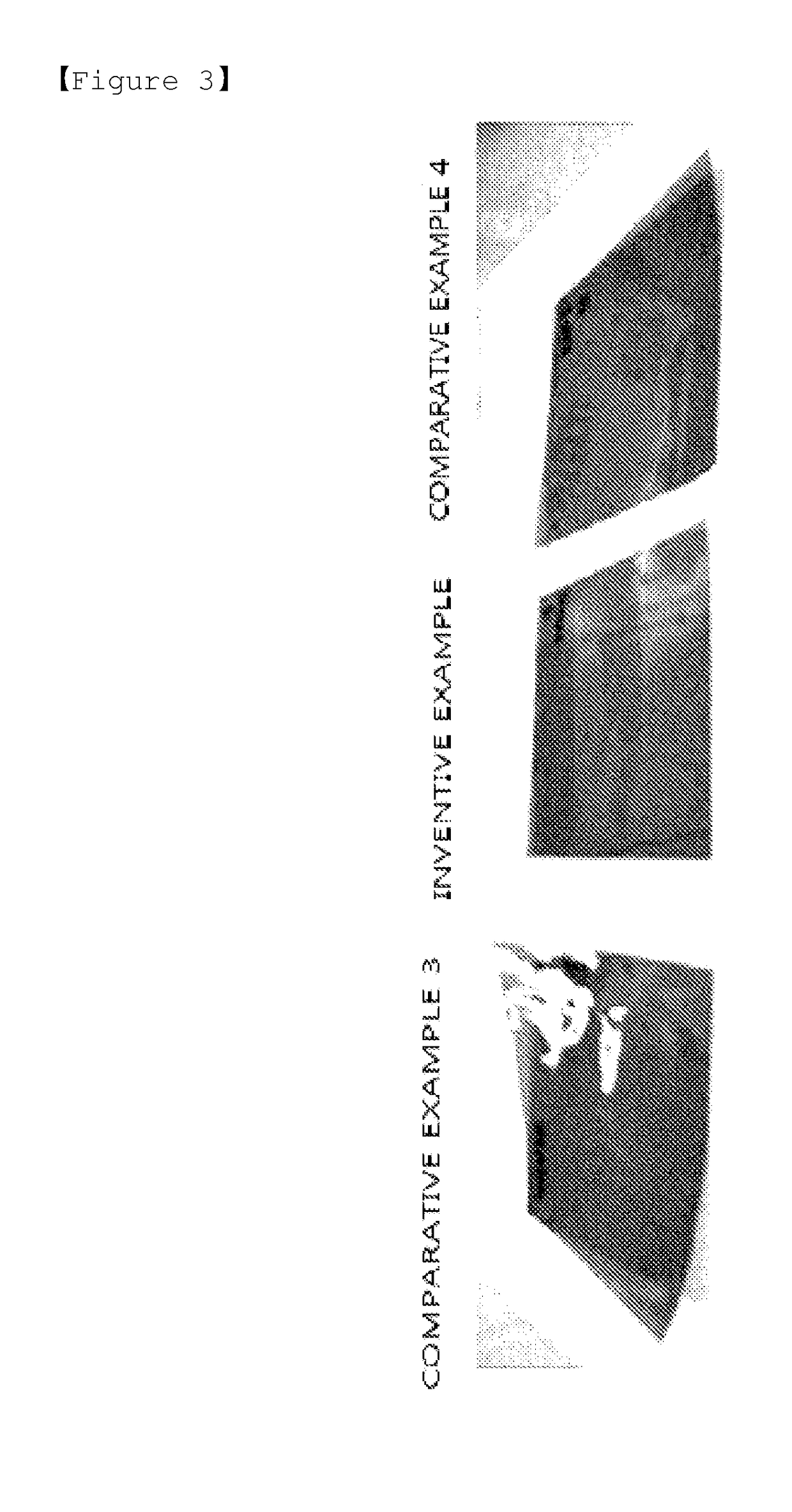Thin polarizing plate and method of manufacturing the same
a polarizing plate and thin technology, applied in the field of thin polarizing plates, can solve the problems of reducing limiting the reduction of the thickness of the polarizer, and increasing the swelling of the pva-based film, so as to achieve the effect of improving the productivity of manufacturing the polarizing plate, reducing the curvature, and superior optical properties
- Summary
- Abstract
- Description
- Claims
- Application Information
AI Technical Summary
Benefits of technology
Problems solved by technology
Method used
Image
Examples
##ventive example 1
Inventive Example 1
[0094]A thin film polarizer manufacturing test was performed by forming a film laminate by attaching PVA films to both surfaces of a thermoplastic polyurethane base film of 60 μm using attractive force therebetween, and stretching the film laminate through wet stretching. Here, the PVA film was a PVA film of 30 μm (M3000 grade manufactured by Nippon Synthetic Chemical Industry Co., Ltd.). After the PVA films were subjected to a swelling process in a pure water solution at 25° C. for 15 seconds, they were dyed in a solution having an iodine concentration of 0.3 wt % at 25° C. for 60 seconds. Then, after the PVA films were subjected to a cleaning process in a solution having a boric acid concentration of 1 wt % at 25° C. for 15 seconds, they were stretched at a magnification of 7 times in a solution having a boric acid concentration of 2.5 wt % at 52° C. After the stretching process, the PVA films were subjected to a complementing process in a solution having a KI c...
experimental example 1
[0099]Single transmittance (Ts), cross transmittance (Tc), degree of polarization (DOP), single color (a, b), and cross color (a, b) of the thin polarizing plates manufactured according to Inventive Example 1 and Comparative Example 2 were measured using a JASCO V-7100 Spectrophotometer.
[0100]
TABLE 1Single ColorCross ColorTs(%)Tc(%)DOP(%)ababInventive42.550.064799.8275−0.032.052.40−1.41ExampleComparative34.970.125999.4971−0.070.562.12−3.01Example 2
[0101]According to Table 1, although the Inventive Example had higher single transmittance (Ts) than that of Comparative Example 2, it exhibited the degree of polarization (DOP) higher than that of Comparative Example 2. Therefore, it can be seen that the Inventive Example had superior optical performance to that of Comparative Example 2.
[0102]Meanwhile, in the case of manufacturing a thin film polarizer using a coating method under the same manufacturing process conditions as those of the Inventive Example as in Comparative Example 1, the...
experimental example 2
[0103]Curling properties of the polarizing plates manufactured according to the Inventive Example and Comparative Examples 3 and 4 were observed with the naked eye. Photographs of the corresponding polarizing plates are illustrated in FIG. 3. With reference to FIG. 3, it can be seen that the polarizing plate manufactured according to the Inventive Example had a lower degree of curling as compared with the polarizing plates manufactured according to Comparative Examples 3 and 4.
Experimental Example 3—Evaluating Uniformity in Degree of Polarization
[0104]With respect to the polarizers manufactured according to Inventive Example 1 and Comparative Example 2, the degrees of polarization were measured at 10 equidistant points on each polarizer in the width direction, and then a standard deviation in the measured degrees of polarization was calculated. The degrees of polarization were measured using a JASCO V-7100 Spectrophotometer. The measurement results are shown in Table 2.
[0105]
TABLE 2...
PUM
| Property | Measurement | Unit |
|---|---|---|
| temperature | aaaaa | aaaaa |
| adhesive strength | aaaaa | aaaaa |
| adhesive strength | aaaaa | aaaaa |
Abstract
Description
Claims
Application Information
 Login to View More
Login to View More - R&D
- Intellectual Property
- Life Sciences
- Materials
- Tech Scout
- Unparalleled Data Quality
- Higher Quality Content
- 60% Fewer Hallucinations
Browse by: Latest US Patents, China's latest patents, Technical Efficacy Thesaurus, Application Domain, Technology Topic, Popular Technical Reports.
© 2025 PatSnap. All rights reserved.Legal|Privacy policy|Modern Slavery Act Transparency Statement|Sitemap|About US| Contact US: help@patsnap.com



